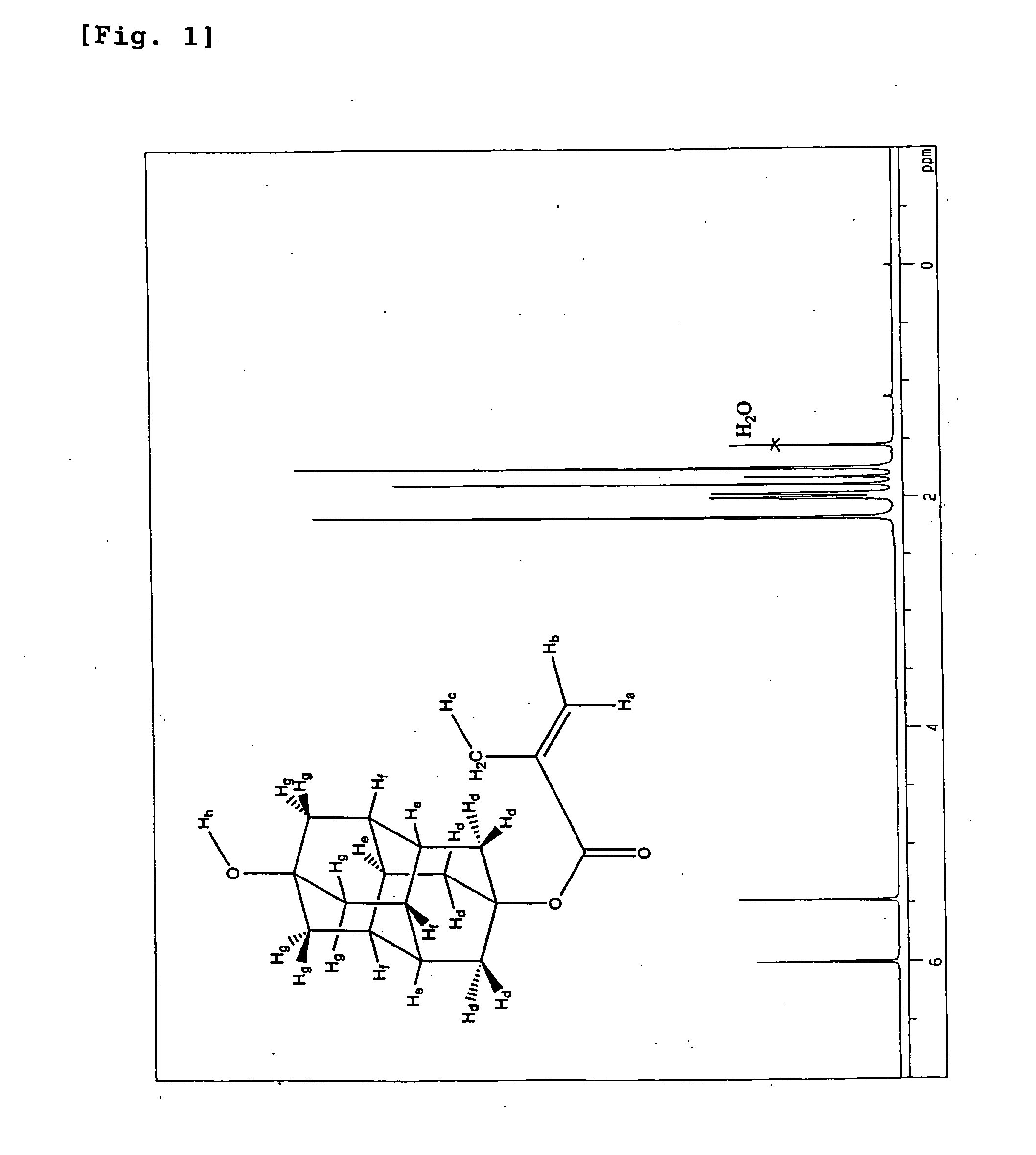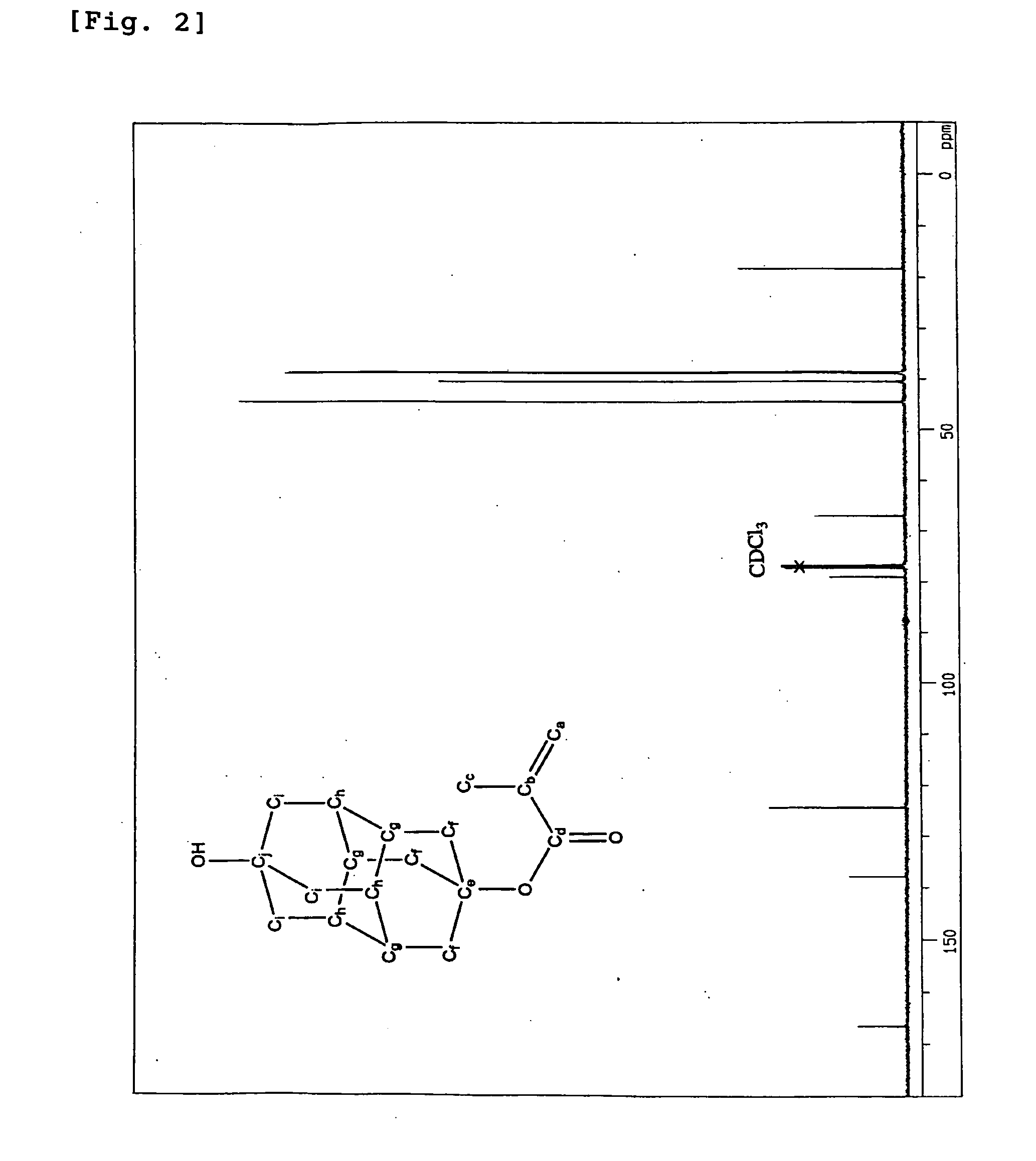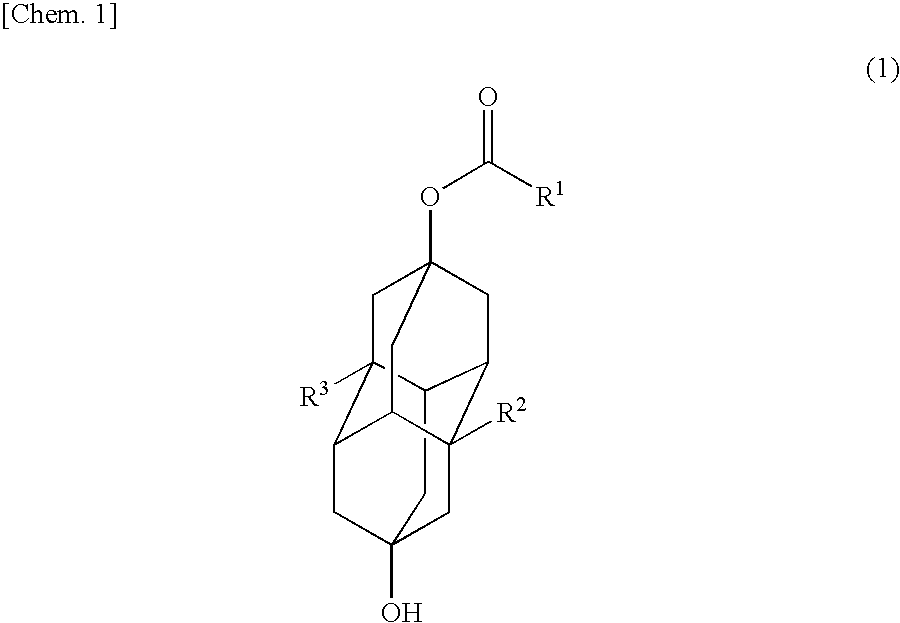Method for Producing Polymerizable Hydroxydiamantyl Ester Compound
a technology of hydroxydiamantyl ester and hydroxydiamantyl ester, which is applied in the field of producing a polymerizable hydroxydiamantyl ester compound, can solve the problems of requiring a relatively small purification by column chromatography and a long reaction time, and achieves low solubility and high purity
- Summary
- Abstract
- Description
- Claims
- Application Information
AI Technical Summary
Benefits of technology
Problems solved by technology
Method used
Image
Examples
example 1
Step (i)
[0119]In a 2000-ml, four-necked flask was placed, in a nitrogen current, 240 g (two times the mass of raw material diamantane) of concentrated sulfuric acid and 9.05 g (0.0637 mole, 0.1 time the mole of raw material diamantane) of sodium sulfate. Then, 120 g (0.637 mole) of diamantane was placed. The mixture of suspension state was heated to about 30° C. Thereto was slowly added 148.4 g (1.274 moles, 2 times the mole of raw material diamantane) of chlorosulfonic acid so that there was no bumping of the mixture. The mixture was stirred at 30° C. for 3 hours. The reaction mixture after 3 hours of stirring was in a suspension state. At this time, GC analysis was conducted. As a result, the amount of remaining raw material diamantane was 70% (this indicates a peak area ratio of GC; the same applies hereinafter), the amount of monochlorodiamantane formed was 3%, the amount of dichlorodiamantane formed was 24%, and the amount of trichlorodiamantane formed was 3%; and the reaction ...
examples 2 to 3
[0133]An operation was conducted in the same manner as in Example 1 except that the crystallization solvent used in the crystallization step was changed to one shown in Table 1. The results are shown in Table 1.
TABLE 1Crystallization solventOther solvent exceptAromatic hydrocarbonaromatic hydrocarbonPolymerizable hydroxydiamantyl ester compoundExampleKindAmountKindAmountYield (g)Yield (%)GC purity (%)Oligomer amount (%)2Toluene6 mass timesHeptane2 mass times2344980.23Toluene6 mass timesHeptane1 mass time2242990.1
examples 4 to 6
[0134]An operation was conducted in the same manner as in Example 1 except that, in the step (iii), the acid catalyst was changed to one shown in Table 2. The results are shown in Table 2.
TABLE 2Polymerizable hydroxydiamantyl ester compoundExampleAcid catalystYield (g)Yield (%)GC purity (%)Oligomer amount (%)4Methanesulfonic acid2140990.15Benzenesulfonic acid2140990.16p-Toluenesulfonic acid2038990.1
PUM
| Property | Measurement | Unit |
|---|---|---|
| time | aaaaa | aaaaa |
| time | aaaaa | aaaaa |
| reaction rate | aaaaa | aaaaa |
Abstract
Description
Claims
Application Information
 Login to View More
Login to View More - R&D
- Intellectual Property
- Life Sciences
- Materials
- Tech Scout
- Unparalleled Data Quality
- Higher Quality Content
- 60% Fewer Hallucinations
Browse by: Latest US Patents, China's latest patents, Technical Efficacy Thesaurus, Application Domain, Technology Topic, Popular Technical Reports.
© 2025 PatSnap. All rights reserved.Legal|Privacy policy|Modern Slavery Act Transparency Statement|Sitemap|About US| Contact US: help@patsnap.com



